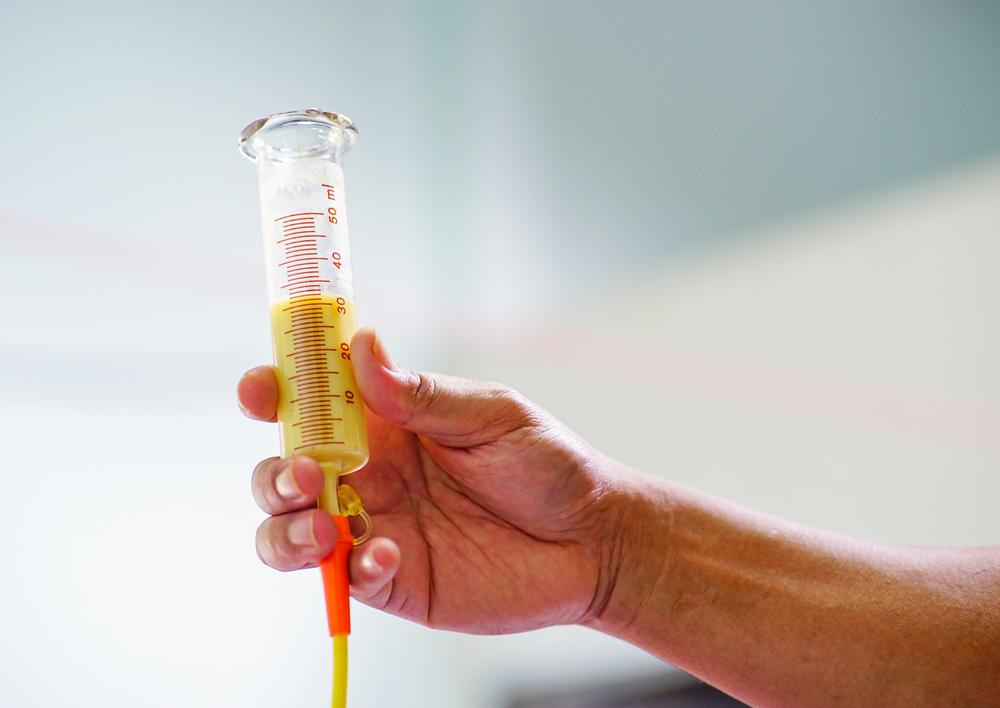Feeding Tubes May Help EB Patients Maintain Weight, Improve Quality of Life, Review Study Suggests
Written by |

Feeding through a tube inserted directly into the stomach, a process known as gastrostomy, is a potentially beneficial strategy for improving nutritional intake in epidermolysis bullosa (EB) patients, a review study suggests.
The study, “Effectiveness of Gastrostomy for Improving Nutritional Status and Quality of Life in Patients with Epidermolysis Bullosa: A Systematic Review,” was published in the British Journal of Dermatology.
The increased severity of EB takes a toll on patients’ metabolic demands. Previous studies suggested that countering the loss of nutrients with a gastrostomy tube (GTT) may help reduce EB-related malnourishment, but data supporting the strategy’s effectiveness had been lacking.
This study aimed to “synthesize the best currently available evidence on the effectiveness and safety of a GTT on the nutritional status and QoL [quality of life] of individuals with EB,” the researchers wrote.
The team researched studies of patients with EB who underwent GTT tube placement for feeding in six databases: EMBASE, LILACS, PubMed, Science Direct, Scopus, and Web of Science.
After a two-step selection process from an initial pool of 474 studies, seven met the inclusion criteria and were included for further review. All studies were case series, meaning that there was no control group.
The selected studies, comprising a total of 145 patients, were mainly conducted in Europe (six studies), plus one in the United States.
The analysis showed that in general, GTT improved patients’ nutritional status and quality of life. One study recommended GTT use whenever the oral food intake was lower than what the patient requires, before malnutrition sets in.
One study suggests that “early placement of a GTT tube might prevent malnourishment and offer them more adequate linear growth,” the researchers wrote.
To consider GTT, however, more objective criteria should be implemented, according to one of the studies reviewed. This may include “a continuous decrease in weight gain or height for at least one year, … despite periodic and near nutritional monitoring,” the team suggested.
Overall, “the placement of gastrostomy is a feasible and safe alternative to provide nutritional support and improve quality of life for patients with epidermolysis bullosa. Although it is not a risk-free procedure, it is recommended for patients with epidermolysis bullosa who present failure to thrive, problems in the oral cavity affecting food consumption, intractable chronic constipation and high stress levels during feeding,” the researchers concluded.





